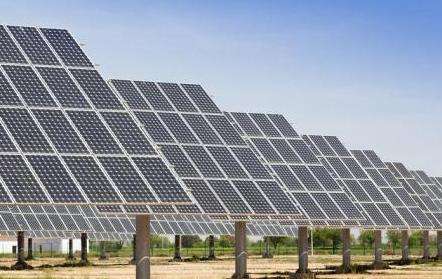The efficiency with which solar panels convert light energy into electrical energy is also called photoelectric conversion efficiency. The conversion rate of photovoltaic panels is one of the important indicators for measuring the performance of photovoltaic panels. Expressed as a percentage, the higher the conversion rate, the more electrical energy from sunlight is obtained and the higher the electricity production. Rate is an important factor affecting the performance of photovoltaic panels. One of the important factors to generate benefits from photovoltaic power generation systems.
What is the highest photovoltaic efficiency?
When it comes to the conversion rate of photovoltaic power generation, we need to talk about age and technology. Before 2014, the two main paths were polysilicon and thin film technology, withec a conversion rate of 8% to 10%.
In 2014, LONGi's diamond wire cutting technology was applied, and single crystal silicon began to lead the way to the technological frontier. The cells became finer and the conversion rate reached 13%.
After some minor technology and process improvements, the conversion rate was slightly improved. Later, Perc technology appeared, which increased the conversion rate of current major components to around 21%.
Current new technologies include heterojunction and perovskite ibc and hpbc, topcon and hjt technologies. Among them, ibc and hpbc are back contact manufacturing methods with more complex processes. The conversion rate increased to around 23% and LONGi also produced components with power optimizers. Personally, I think that ibc and hpbc can only be quantitative productstatives with improved efficiency to improve the difficulty of the process. Products that don't increase conversion rate much should only be transitional products. After all, if the process is complex, it is not possible to reduce prices.
The industry is most concerned about topcon and hjt heterojunction technologies. Both technologies can only increase the conversion rate by 2% to 5%. Since the limit of crystalline silicon conversion rate is only 29%, it would be great to increase it to 23% or 25%. Among them, topcon technology can reduce the process flow by two to three times compared with the original production line, so that several large manufacturers can already ship in batches at a high price. HJT heterojunction technology requires a new production line, and the cost of the production line is 40% more expensive than Topcon, so it has not yet been shippedied on a large scale. However, HJT heterojunction technology has only six processes and low production costs. However, it requires the use of silver paste at low temperature. When mass production is low, there is no price advantage. If mass production is carried out in the future, low temperature silver paste will definitely be produced domestically. The silicon wafers will use tungsten wire cutting technology, and there will be huge room for cost reduction. But regardless of topcon or heterojunction, the mass production power only reaches 25%.
The theoretical conversion efficiency of perovskite technology can reach 36%, but due to its rapid degradation, no one in the industry has been able to overcome this problem. A large manufacturer claimed to have mass-produced more than ten megawatts, but its credibility is not high.
ToIn the future, the stacking technology of crystalline silicon and perovskite will need to be developed. There are different opinions on the level of effectiveness possible. After all, the perovskite attenuation problem has not been solved until now. .
How is the conversion rate of solar panels calculated?
33.7%, 50%. The conversion efficiency of photovoltaic modules refers to the amount of sunlight converted into solar cell modules. In terms of conversion capacity into electrical energy, the maximum conversion efficiency of monocrystalline silicon solar cells is 33.7 %, and the maximum conversion efficiency of polycrystalline silicon solar cells can even exceed 50%.
The photoelectric conversion efficiency of the solar panel = the maximum electrical output power of the solar panel ÷ the power of the sun shining on this solar panel.
This measure is limitedto the vertical illumination of the cloudless midday sun at a certain latitude (usually between the equator and the Tropic of the Tropic).
At present, the photoelectric conversion efficiency of most solar panels is around 10%, and very few can reach more than 20%. If it can reach 40-50%, it will be a great achievement and attraction. the attention of the whole world.














